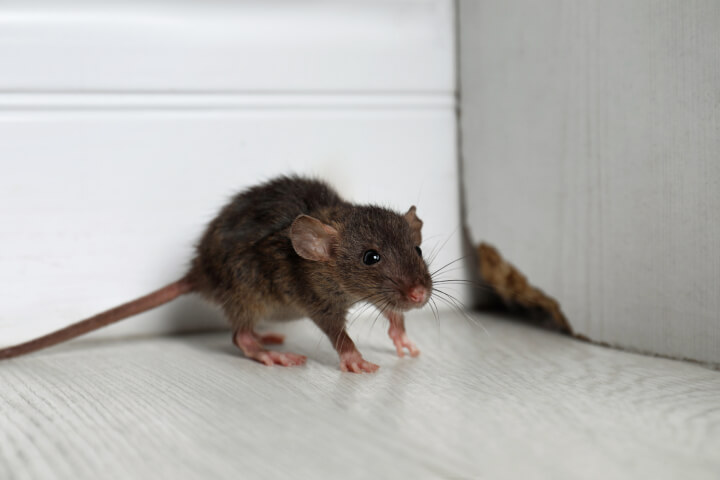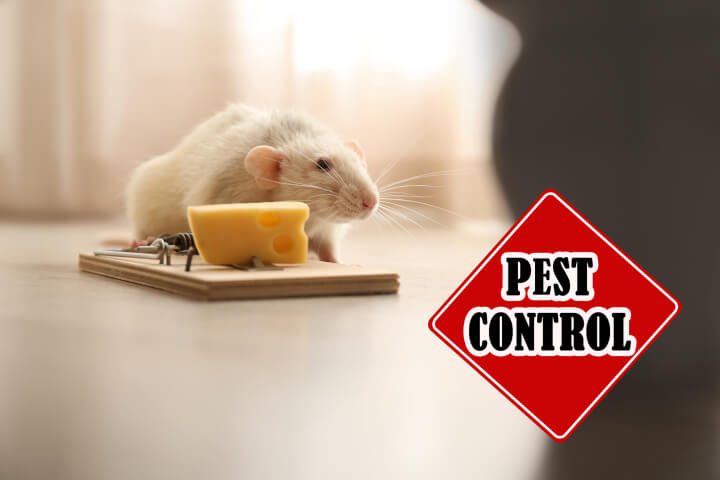


A seasonal home is a great investment for individuals who want to dabble in real estate investing. It can also simply be a private property where they can take their families on getaways and holidays. But one drawback of seasonal homes is that it is not always occupied, and when it’s not properly maintained, unwanted lodgers like pests and rodents may easily find their way in.
So how do you get rid of mice and rats at a seasonal home? Setting up mouse traps is the best way to remove existing rodents inside your property. Lay down multiple traps around your home and install them perpendicular to the wall so the rodents will easily land on your trap. You should also make sure to put the right bait and wear gloves when placing them.
Learn More: How Far Should You Space Mouse Traps Apart?
Having mice in a seasonal home can be frustrating, not to mention that it can make your stay uncomfortable and there are possible health risks and contamination if there’s already a severe infestation. Rodents are also capable of causing structural and property damage so if they’re not immediately taken care of in your seasonal home, you may have to deal with repairs.
Mouse trapping is the most common and effective rodent control method that can be used at a seasonal home. While poison baits and rodenticides are also available, they are less humane and can be toxic to use indoors especially if you have children and pets. Here are some of the best practices for effectively trapping mice:
The first step in mouse trapping is always to inspect areas with visible evidence of rodent activity. Look for signs of mouse droppings, urine trails, or footprint marks as these can point you to their active rodent runways. Mouse traps should be strategically set up in these areas where mice and rats can easily run into them otherwise your rodent control will be ineffective.
When mice come out to search for a food source, they like to keep their bodies close to the walls or baseboards. They have poor eyesight so they can’t clearly make out their surroundings and have to rely on sensing their way around with their whiskers. Installing mouse traps close to the walls will work to your advantage as they can easily come into contact with it.
In particular, you have to position them perpendicularly against the walls so that there are two sides where rodents can run into your trap. If you’re using a traditional snap trap, make sure to set the trigger part of the trap against the wall to release the bar when there is a rodent.
Preparing one mouse trap is likely not enough to eliminate and control the rodent population in your property. As much as possible, set up multiple traps with two to three feet distance from each other so you have a better chance of catching mice. You can also place two traps together along one wall so if the rodents try to leap over it, they can still land on the other trap. A dozen traps are a good number to start with when you want to catch rodents on your property.
Mice are extremely cautious when they detect new objects along their usual route. But if you prepare the right bait in the trap, they’ll naturally make their way to try and take it which can set off the capture mechanism in the process.
While cheese is an obvious bait choice, it may not always be effective since mice can easily steal the block of cheddar without triggering the trap. It’s best to use sticky food baits like peanut butter since it is difficult for the mice to take off the trap. If you want to use solid baits like nuts, seeds, grains, and chocolate, secure them with dental floss so the mice cannot run off with it.
In addition, you should always wear disposable gloves when handling traps and bait. One common mistake when placing traps is using your bare hands. You run the risk of leaving your scent all over the trap and bait which can repel the mice and make your trap useless.
Removing rodents with traps is an ideal way to ensure that you can fully enjoy your stay in your seasonal home. The great thing about traps is that they are convenient and easy to use so you can install them on your own. Here are the other benefits of placing mouse traps to remove rodents on your property:
Read More: Are There Any Humane Mouse Trap Substitutes?

Traps can be bought in any local hardware store and there are different types that you can choose from. Each mouse trap type has its own distinct features and advantages so it is best to know more about them before determining what you need. Here’s an overview of the common options for mouse trapping:
| Mouse Trap Type | Best Features As A Mouse Trap | How Do You Use Them |
| Snap traps | It’s a traditional iconic trap option for rodent control It’s highly effective for instantly capturing mice Snap traps can be reused as long as you have properly cleaned and sanitized them | Wooden or plastic snap traps come with a spring mechanism that’ll release a metal bar upon contact with a rodent They’re best for catching mice along the walls, baseboards, or in corners inside your attic and cabinets |
| Glue traps | They contain a sticky adhesive that won’t instantly harm the rodent They’re non-toxic so they’re a great rodent control alternative in areas where you can’t use rodenticides It’s an effective trap that can help monitor the activity of mice and other pests in your home | Glue traps are also known as glue boards or sticky traps. This device has a sticky flat surface that’ll quickly immobilize any rodents that come across it. |
| Electronic traps | It’s a battery-powered mouse trap device It’s said to have high rates of success in quickly exterminating rodents Unlike snap traps and glue boards, the captured mice are enclosed in a box so you don’t need to see or directly touch the dead rodent This can work for both small rodents and large rats | Electronic mouse traps kill mice by sending a high-voltage electric current that shocks them once they enter the box. |
| Live traps | Live catch traps are a more humane solution for rodent control These traps are also suitable for catching multiple mice at once It’s a no-kill trap and captured rodents are released in a location that’s far from your property | Live traps have a catch-and-release system that uses bait to attract the mice into the metal containers or plastic cage |
Wintertime is often the best time to visit your seasonal home but unfortunately, it’s also the peak season when rodents start getting inside your place. Like most pests, mice dislike the cold weather and will often search for spaces that offer shelter, warmth, and food supply.
Most rodent infestations begin once the summer months end. They can begin entering your home uninvited during the start of fall from August to October. When cold winter months roll along, they’ve most likely settled in their new nests and they will become more active in looking for supplies of food in your kitchen and pantry.
Mice infestation can also happen because they are enticed by the clutter surrounding your seasonal home. Keeping piles of firewood, branches, and logs near the vicinity of your house can be an ideal habitat for mice and rats. If you store them too close to your doors or windows, this may lead them inside the home and start an infestation.
One of the first things that can warn you of a mouse infestation is the foul smell of rodent urine inside your home. After not using your seasonal home for a period of time, you may detect a pungent scent which is likely the result of scattered mouse droppings and urine. Other signs of recent mouse activity are:
Read More: How To Keep Birds Out Of The Mouse Traps

When you’re out for a relaxing holiday in your seasonal home, the last thing you want to find is rodents scurrying around. Keep your exclusive property mouse-free with regular rodent control and maintenance with Permakill Exterminating.
Permakill Exterminating is a locally-owned pest control company that provides quality rodent removal and control services. We also offer comprehensive pest management solutions and treatments for other insects, bed bugs, and termites that may be invading your home. Contact us now to learn more about our home protection plans for your specific pest control needs.